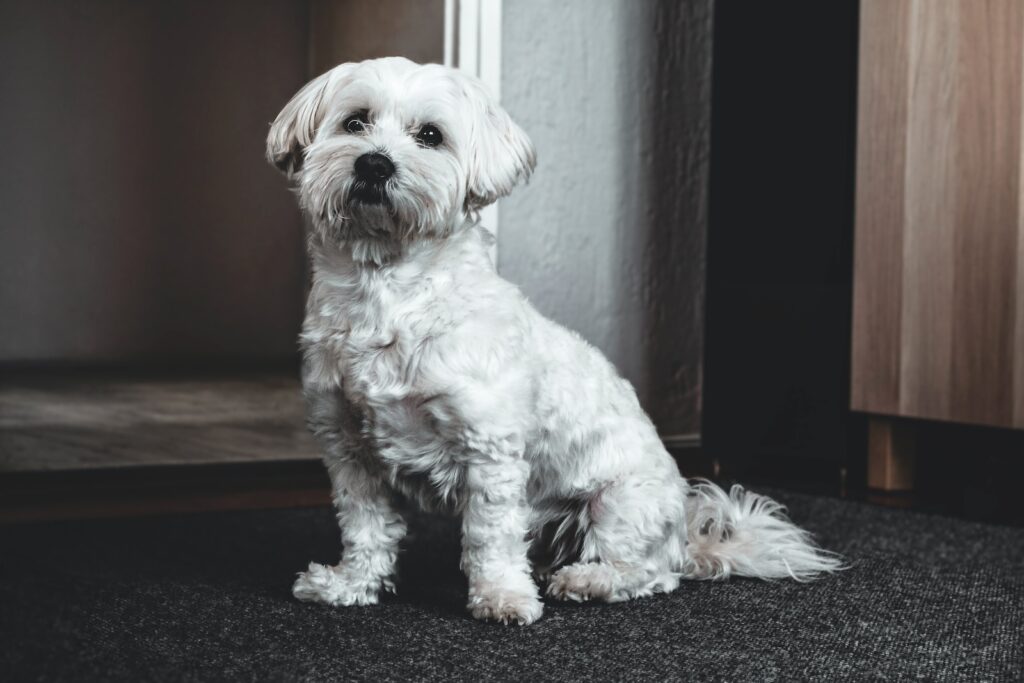Can Dogs Eat Crab? — No, They can’t
Crab is not recommended for dogs as it can pose several health risks to our furry friends. While some dogs may tolerate small amounts of cooked crab, it is best to avoid feeding it to them altogether. Here’s why:
Can Puppies Eat Crab?
Puppies should not consume crab either. Their digestive systems are still developing, and crab may be too rich for their delicate stomachs. It’s important to provide puppies with a balanced diet specifically formulated for their nutritional needs.
Things to consider when feeding crab to puppies?
When it comes to puppies, it’s crucial to consult with your veterinarian before introducing any new foods, including crab. They can provide guidance tailored to your puppy’s unique needs and ensure their overall health and growth.
Nutritional Benefits of Crab for Dogs — Why Crab is not Suitable for Dogs?
1. High Sodium Content
Crab contains high levels of sodium, which can be detrimental to dogs, especially those with underlying health conditions such as kidney or heart problems. Excessive sodium intake can lead to dehydration and elevate blood pressure, potentially resulting in serious health issues.
2. Potential Allergenic Food
Crab is considered an allergenic food for dogs. Just like humans, dogs can develop allergies to certain food items, including shellfish. Allergic reactions in dogs may manifest as skin irritations, gastrointestinal distress, or respiratory problems.
3. Risk of Shell Splintering
The hard shells of crabs can pose a significant risk to dogs. If ingested, the shells can splinter and cause obstructions or lacerations in the digestive tract. This may require surgical intervention to remove the shards and treat any resulting complications.
4. Potential Bacterial Contamination
Crabs and other shellfish can harbor harmful bacteria, such as Salmonella or Vibrio, even when properly cooked. Dogs consuming contaminated crab may experience symptoms like diarrhea, vomiting, and abdominal pain.
5. Choking Hazard
Crab legs and claws have sharp, pointy structures that can pose a choking hazard for dogs. Ingesting large, jagged pieces can lead to choking or throat obstruction, necessitating immediate veterinary attention.
Potential Allergies: Can Dogs Be Allergic to Crab?
Yes, dogs can be allergic to crab. Common symptoms of crab allergies in dogs include itchiness, hives, swelling, gastrointestinal upset, and respiratory difficulties. If you suspect your dog is allergic to crab, it’s essential to consult your veterinarian for a proper diagnosis and guidance.
Symptoms of Crab Allergies in Dogs
- Itchiness: Dogs may excessively scratch, bite, or lick their skin.
- Hives: Raised red bumps or welts may appear on the skin.
- Gastrointestinal upset: Symptoms may include vomiting, diarrhea, or nausea.
What to Do If Your Dog Shows Symptoms?
- Consult Your Veterinarian: Seek professional advice if you notice any signs of allergy or adverse reactions in your dog after consuming crab.
- Follow Veterinary Recommendations: Your veterinarian will guide you on the best course of action, which may involve allergy testing, dietary changes, or medication.
- Avoid Future Exposure: To prevent further allergic reactions, keep your dog away from crab and other potential allergens identified during veterinary evaluation.
Recommended Amount: How Much Crab Can a Dog Consume?
Due to the various risks associated with crab consumption for dogs, it is recommended to avoid feeding it to them entirely. There are many other safe and nutritious food options available specifically formulated for dogs.
Things to Consider When Feeding Crab to Dogs
It is crucial to prioritize your dog’s health and wellbeing by providing them with a well-balanced diet consisting of commercially prepared dog food. If you have any concerns or questions about your dog’s diet, consult with your veterinarian for personalized advice.
How to Feed Crab to Dogs: A Quick Guide
While it is generally not recommended to feed dogs crab, here is a recipe for a homemade dog-friendly seafood dish:
Crab and Vegetable Medley
This recipe combines crab meat with dog-safe vegetables for a healthy alternative:
- Ingredients:
- 1 cup cooked and shredded crab meat
- 1/2 cup cooked peas
- 1/2 cup cooked and mashed sweet potato
- 1/4 cup finely chopped carrots
- Instructions:
- In a mixing bowl, combine all the ingredients until well-mixed.
- Serve a small portion as a topping on your dog’s regular food or as an occasional treat.
Conclusion
Crab should not be included in a dog’s diet due to the potential risks it poses to their health. High sodium content, allergenic properties, risk of shell splintering, bacterial contamination, and choking hazards make it unsuitable for our furry companions. It is always best to consult with your veterinarian to ensure your dog’s diet aligns with their specific needs and to explore safer alternatives.






